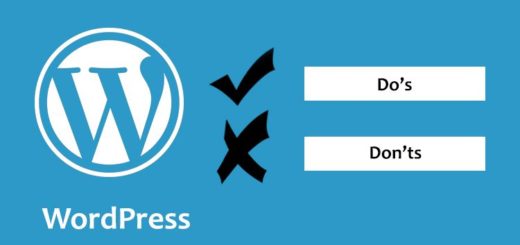How businesses use analytics software to grow and succeed
In a world where data is always growing, and we’re increasingly dependent on data-driven decision-making, it’s hardly surprising that analysts are becoming increasingly popular with businesses looking to grow their audiences and build their household names. After all, data is never going to stop growing – and it’s there for us to use to our advantage.

That said, data isn’t always as easy to wrangle and analyze as it might first seem. Numbers and figures on a page can seem complex to break down and add context to if you don’t have the correct tools and requisite experience with data.
Therefore, business analysts and data scientists are more in demand than ever. Their jobs might be secure – and that’s simple enough to understand – but how might they actually use business analytics software to support data-driven decision-making?
It’s just one technological avenue many businesses are traveling down to become more efficient – avenues which also include smart asset management, for example.
In this guide, we’ll take a look at the concept of data-driven business decision-making and reveal a few key ways in which analysts help businesses hit targets and exceed expectations for their customers and stakeholders.
What is data-driven decision-making?
Data-driven decision-making describes business activity based on raw, objective information. Decisions made by consulting data are frequently based on precedents and, in many cases, on forecasting for periods to come.
For example, a business might look at sales data from a given holiday period to analyze how much revenue they are likely to bring in over this year’s Christmas rush. By crunching this data from year to year, they can prepare inventory, plan marketing campaigns with relevant teams, and check what their rivals are doing.
No one is truly clairvoyant when running a business, which is why so many business owners choose to fall back on data to help make more confident and informed decisions.
However, making data-driven decisions isn’t always simple. It’s not easy to look at a simple set of figures on a page and make solid predictions. That’s why companies often hire business analysts to help them make sense of the context around such data and forecasting.
Why do companies hire business analysts?
There are many key reasons why a business might choose to hire an analyst, or even a whole team of data scientists, to break through their numbers and figures. One reason is that making the most of data often requires an experienced hand, and the ability to use specific types of software.
People who run businesses – and directors on the boards of bigger organizations – won’t necessarily have the time to immerse themselves in learning how to manage and analyze data. They’re in a position to assess reports, but analysts can help to produce those reports from a wide array of data.
Analysts help directors and business owners understand and appreciate the insights that analyzing significant amounts of data can bring. That means they can make more confident decisions rather than having to rely on gut instinct or copying the competition.
Of course, another huge benefit to hiring a business analyst is the fact they can often make processes more efficient. In a society where consumers and end users expect products and services to be faster, and of better quality, than ever before, data analysts can help to streamline often clunky processes to the benefit of even the biggest companies.
The more efficient and productive a company is, the better prepared they are to meet changing demands and keep up with fast-moving industry trends. A business analyst can easily pinpoint areas within a supply or production chain that might be slowing things down, or where there needs to be more focus.
Beyond this, data and business analysts can simply provide companies with new angles on the same old processes. They’re not afraid to make bold suggestions and to help directors and owners look at problems from different viewpoints – particularly those of end users and customers.
What does a business analyst learn?
A truly successful business analyst will not only learn how to read into the context surrounding significant amounts of data and learn how to create reports for business owners, they will also learn how to use a variety of popular tools to help crunch the numbers.
For example, budding analysts studying degrees such as a Master of Business Analytics online via St. Bonaventure University will learn about data warehousing, predictive analytics, analytical programming, data visualization, and prescriptive analytics. To cover these points sufficiently, and to understand how to apply these concepts in real-world business situations, they’ll need to get a handle on tools such as MySQL, Tableau, Mongo and Python coding. The program at St. Bonaventure in particular is set up to provide study and insight at a steady pace, easily manageable from afar.
Students getting into business analysis will likely find the modules on such courses to be intriguing and highly interactive. There are plenty of opportunities for budding analysts to get their teeth into raw data and start practicing the skills they need to develop as they go along.
A business analyst will need to demonstrate more than just aptitude with various tools when working with data in real-world scenarios. They are also likely to need a good head for critical thinking, calmness in crisis situations, and a strong core of IT and networking knowledge.
Of course, while it’s a benefit to have this knowledge and these skills when getting started in any degree course, these are all elements students can develop as they progress.
How do analysts use tools to help support businesses with data?
It’s easy to just say that analysts simply look at data and immediately know what to do with it! However, there is a lot of nuance and context to keep in mind – analysts need to understand what specific reports and tools have to say about the potential future of the company where they’re working.
That means getting to grips with how to use specific software and tools as well as understanding how to apply them to specific situations and in certain industries.
For example, the data insights one might gain while assessing a banking company will likely look very different compared to a business that produces and markets children’s toys.
Therefore, business analysts must remain flexible and build broad tool-based skills they can transfer across different companies if they wish to be as employable as possible. Of course, there’s no harm in finding a niche!
In any case, let’s look at a few ways in which analysts can use tools to their advantage when supporting a variety of different companies – regardless of size and purpose.
They can personalize experiences for customers
Some of the most powerful and insightful data which analysts can work with is that of customer behavior. For example, take a large-scale retail operation that monitors customer buying behaviors during big sales, and demographic data from interested buyers who interact via social media and e-commerce.
Customer data can help analysts and business owners create consumer avatars to make clearer predictions about their behavior during specific periods. For example, they might discover that customers aged 60 and older are more likely to swing towards a particular clothing range at a certain time of year.
An analyst can build reports based on this data, which can then lead business owners to set marketers and sales departments into action in promoting these clothing lines. They might also have enough sales insights and revenue data to lower the price of certain lines to help boost purchasing.
Or, they might use this data as inspiration to create similar lines or to encourage production staff to focus their efforts on this particular label or line for the foreseeable future. In rare cases, such data might even help companies to pivot in completely new directions. What if they find that their biggest draw is in cardigans for the over-60s, yet their children’s clothing lines are barely breaking even?
That might convince business leaders to consider shifting direction for the future – with forecasts suggesting that the majority of their future revenue lies with the older consumer.
Personalizing experiences for customers also helps buyers feel more appreciated and more at home with certain brands. In the age of companies and brands reaching out to people on social media, this closeness has never been more important for growing a business.
They can help to improve data security
While it’s safe to assume that many business analyst reports will revolve around sales, marketability and revenue, they can also play key roles in helping companies to protect customer data.
There doesn’t seem to be a week that passes without there being news of a data breach hitting a major brand, either in the US or elsewhere. Unfortunately, malicious attacks are growing more sophisticated and efficient, which means it’s down to companies and their security personnel to tighten things up.
Business analysts can support this process by producing reports that show potential patterns in malicious attacks and data leaks. Using visualization tools, analysts can pull data from previous breaches and present the likelihood of future attacks and loss in digestible formats.
Visualization software can pull in a variety of data that might seem difficult to crunch at first glance. Using their expertise and knowledge of specific tools, analysts can then manage the data fed in and create visually appealing security reports that make sense from a layman’s perspective.
Creating visual reports is particularly important in these circumstances as the forecasts need to be easily understood by various departments. Analysts aren’t just pitching reports to business owners and fellow analysts, but also to IT security personnel who will use forecasts to inform their decisions including about where to best spend budgets.
They can sift through and filter huge amounts of data
One of the biggest challenges businesses face with crunching data is knowing which information is most important and relevant for making specific predictions. In many cases, data pulled from customer interactions, sales and inventory will simply head into data lakes.
That means that, without ‘cleaning’, this data is just set to pile up and get even more confusing. A business analyst can use tools to sift data lakes and sort information based on its importance to specific projects, and ensure the details available are up-to-date.
Sorting through data lakes also means that analysts can remove duplicate or erroneous information that might otherwise make its way into reporting and misinform business owners about what’s happening. Many experts also know this process as data mining – and analysts can use artificial intelligence and machine learning to sift through lakes faster to tag and sort data into different categories.
Data mining is important for all kinds of reports – with unsorted, ‘unclean’ data, analysts risk making mistakes and delivering predictions that are way off base.
Filtering and sorting this data means analysts can get straight into discovering insights. Using machine learning tools helps as they give analysts more time to consider their insights and build reports rather than pulling and sorting the data into place manually.
Business owners frequently need analysts and data scientists to mine lakes because of the specific skills and experience required. Looking deeply into a data lake without any kind of mining knowledge or tools to hand often proves fruitless.
Business owners also need analysts and scientists with mining tools to keep their lakes easy to sort and pull from in the future. Otherwise, they are simply dealing with stacks of information with no clear insights for the future.
They can produce A/B tests
Data analysts can also help business owners take calculated risks by developing A/B testing models. Using predictive analytics tools, analysts can create hypothetical scenarios that might head in one direction or another – and suggest what businesses need to do to achieve either route.
In doing so, they might also inspire businesses to lead with two different product models and test their outcomes when pitching to the mass market. Analysts can run predictions on what’s likely to happen with model A versus model B to give more confidence.
Moreover, analysts can also pull data after A/B testing to help show business owners what went right and what was less successful from either route. What was it about product B that was so much more appealing than product A, for example?
Again, analysts can use various tools to help pull the information they need to deliver A/B testing verdicts. They could use tools that collect spend and revenue information to help measure ROI (return on investment), for example, and others that monitor social media ‘chatter’ about given products.
By monitoring these figures using different tools and platforms, analysts can build a bigger picture of what drives people to buy from a specific service and what the company needs to do to build growth and revenue in the long term.
For example, by using analytics tools, business analysts might find that hashtag use on social media was particularly positive for product B, which is what led to greater uptake. The analyst can then look carefully at marketing spend and technique to see if there were any major differences they can capitalize on.
Using analytics in this way not only helps to predict success, but also helps companies to define and perfect their product lines. The tools analysts use are highly beneficial in helping companies understand their buyers better over time.
Do all businesses need analysts?
Given the rise of artificial intelligence in recent years, it is reasonable to say that most companies will need data analysts and scientists for the time to come.
Data is something that will never stop building, collating and growing – and, in a society supported by social media and e-commerce, it makes business sense to use the data available to our advantage.
But, analyzing this data needs a specific type of support and expertise. Business analysts have the experience and skills to break down certain types of information and use various tools to build reports and visualizations.
The alternative, for a business owner, is to react quickly based on the data available without understanding the context behind it, or seeing patterns that might help them make better decisions in the future. The shift towards data-driven decision-making in business has also forced companies to prioritize data and how they use it if they wish to stay competitive. After all, blindly running a company without using data insights could put business owners at serious risk of revenue loss and even becoming obsolete.
Business analysts are likely to have safe jobs for many years to come. However, the best analysts are those who are unafraid to learn new techniques, to improve their skills, and to use a variety of tools to inform their processes.
That’s why getting an education in business and data analysis is vital for success in this career path. Many of the skills you’ll learn will arise as you gain experience on the job – but you need that technical knowledge as a solid foundation.






















